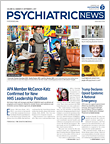Physician burnout is a syndrome characterized by emotional exhaustion, cynicism, and decreased effectiveness at work, and its prevalence is steadily increasing among physicians in the United States. The syndrome is primarily driven by recent changes in the health care system resulting in chronic workplace stress including overly demanding jobs with a high degree of responsibility but little autonomy or control.
Burnout has significant consequences for physicians, their patients, and health care organizations. It is highly associated with depression, suicidal ideation, and substance abuse, and has the potential to harm patients because of its association with compassion fatigue and medical errors. Further, burned-out physicians are more likely to leave the medical profession or recommend against others pursuing it.
This past March, the AMA and CEOs of 10 leading health care systems declared physician burnout a public health crisis. They have committed themselves to addressing this national problem and issued a call for other health care administrators to join them in their efforts. However, while it is well recognized that burnout is a problem, solutions are not clear.
Prior to this call, some organizations had recognized that physician burnout was a problem and physician wellness was vital to the delivery of high-quality health care. They demonstrated their commitment to addressing burnout by making physician wellness and satisfaction a quality indicator. They also have implemented physician wellness committees to assess the degree of burnout, identify drivers, create and implement interventions with input from front-line physicians, and resurvey periodically to measure success of the intervention.
While this approach makes intuitive sense, many of the interventions to address physician burnout have not been rigorously studied. Among the small number of studies that have evaluated interventions for burnout using randomized, controlled clinical trials, several—reported in JAMA Internal Medicine (February 1) and Lancet (November 5, 2016)—demonstrate a small, but beneficial effect. However, there is significant variability in the types of interventions evaluated (physician directed versus organization directed), aim of intervention (prevention versus symptom reduction), delivery method (in person versus online), duration of intervention (two weeks to nine months), population (attending physicians versus physicians in training), and setting (university versus community hospitals).Such variability has made it difficult for administrators and educators to decide which intervention is most likely to be helpful at their institution.
Burnout interventions that have been studied can be broadly characterized as either physician directed or organization directed. Physician-directed interventions attempt to prevent burnout or help physicians recover from its effects by enhancing resiliency via effective communication and coping skills, cognitive-behavioral therapy, and stress-reduction techniques such as mindfulness meditation. Physician-directed interventions reinforce the importance of self-care such as adequate sleep, physical activity, and a healthy diet as well as encourage peer support with colleagues through small-group discussions and the establishment of physician-wellness programs.
Organization interventions seek to mitigate workplace stressors by adjusting workloads or schedules and decreasing clerical burden. For example, among physicians working in the ICU, cross-coverage on the weekends rather than continuous scheduling was shown to result in reduced burnout scores, improved work-life balance, and lower levels of physician distress. Other efforts to alleviate workload have included utilizing medical scribes to document details of the medical visit in the EHR or adding advanced providers who can complete necessary authorizations and documentation and discuss salient features with the physician before the patient visit.
Recently, gender disparities in burnout have been recognized. The 2016 Medscape Lifestyle Report showed that while burnout is rising rapidly among all physicians, women have higher rates of burnout than men (55 percent versus 46 percent). For women, burnout is highly associated with work-family conflict, and efforts to alleviate work-family conflict may reduce symptoms of burnout. At Hennepin County Medical Center in Minneapolis, the stress levels of women physicians fell when an effort was made not to schedule complicated cases as the last case of the day so that they could more reliably leave work to pick up their children from daycare by 5:30 p.m. Other pilot programs designed to ease work-family conflicts among physicians through providing free home-delivered meals, child care, and housecleaning are in their infancy and should be tested to see if they reduce work-family conflict, physician burnout, and its negative consequences.
A subgroup analyses in one recent meta-analysis evaluating the benefits of interventions for burnout demonstrated that organization-directed interventions reduced burnout measures of emotional exhaustion significantly more than physician-directed ones. The APA Board of Trustees Ad Hoc Work Group on Psychiatrist Well-Being and Burnout found similar results. The work group reviewed all available randomized, controlled clinical trials evaluating the efficacy of burnout interventions (n=26). While only a minority of these interventions were organization directed, 71 percent of institution-targeted interventions successfully reduced burnout, while only 42 percent of physician-directed efforts did so. These results are not surprising since workplace stressors are believed to be the primary triggers of burnout. However, effectively addressing physician burnout likely requires attention to both individual and organizational factors.
A report this year by Deanna Chaukos, M.D., and colleagues in Academic Psychiatry (July 6) proposed a conceptual model based on a public health preventative framework to address physician burnout. There is substantial evidence supporting the effectiveness of this approach for public health crises and includes an integrated and comprehensive approach that can be applied at any institution.
The approach entails (1) primary prevention efforts to preserve and promote physician mental and physical health through educational efforts, emotional and social supports, and improved learning environments; (2) secondary prevention through the identification of those at risk for burnout or mental health problems including formal screenings and peer recognition; and (3) tertiary treatment of mental health problems with confidential, easily accessible, evidence-based mental health treatments.
The public health prevention model provides organizations with a clear roadmap to begin addressing physician burnout and can help to generate much-needed data to guide efforts to reduce symptoms of burnout in health care providers. ■
The 2016 Medscape Lifestyle Report can be accessed
here.


